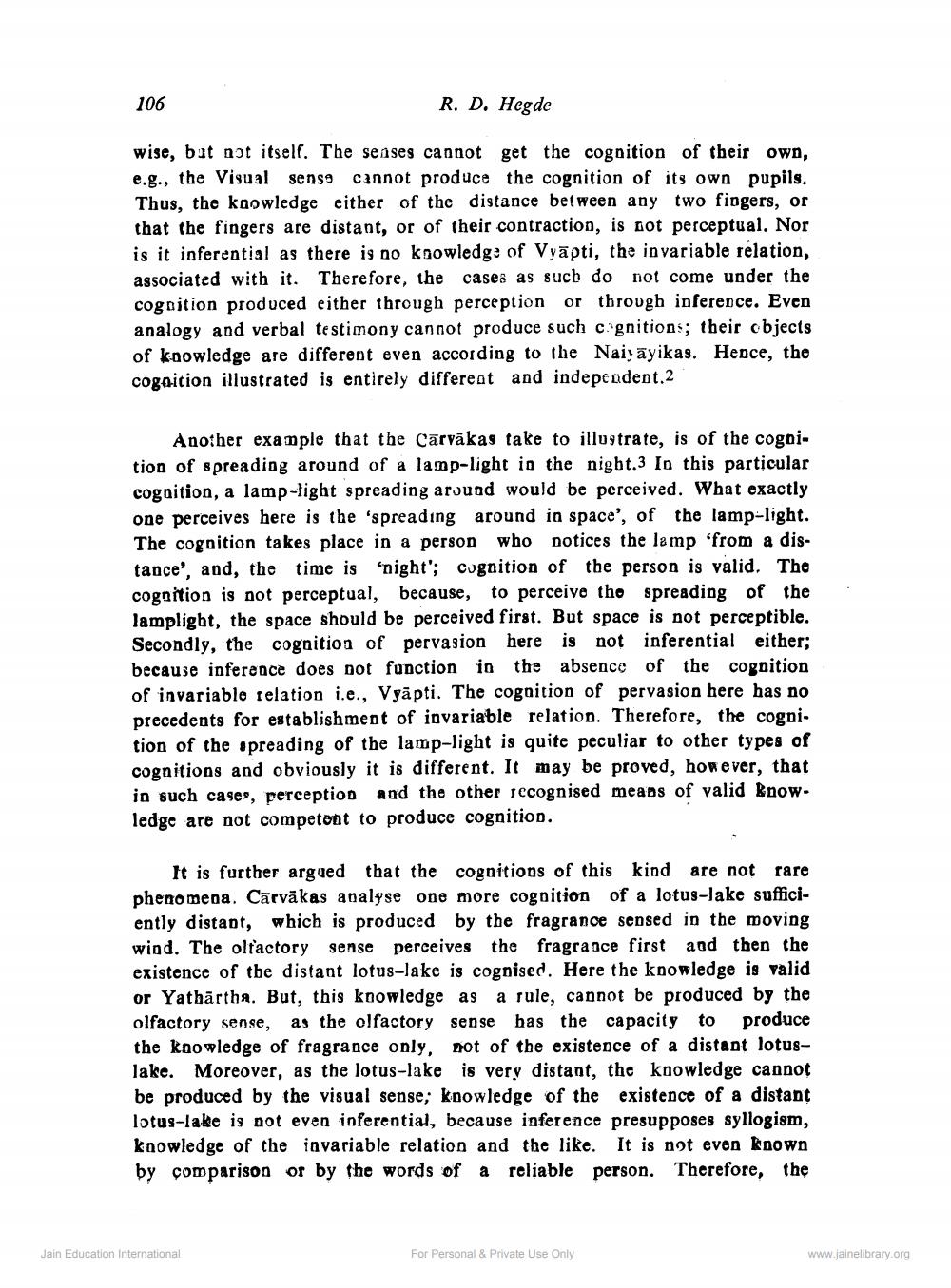________________
106
R. D. Hegde
wise, bat not itself. The senses cannot get the cognition of their own, e.g., the Visual senso cionot produce the cognition of its own pupils. Thus, the kaowledge either of the distance between any two fingers, or that the fingers are distant, or of their contraction, is not perceptual. Nor is it inferential as there is no knowledge of Vyāpti, the invariable relation, associated with it. Therefore, the cases as sucb do not come under the cognition produced either through perception or through inference. Even analogy and verbal testimony cannot produce such c. gnitions; their objects of knowledge are different even according to the Naiyāyikas. Hence, the cognition illustrated is entirely different and independent.2
Another example that the Cārvākas take to illustrate, is of the cognition of spreading around of a lamp-light in the night.3 In this particular cognition, a lamp-light spreading around would be perceived. What exactly one perceives here is the 'spreading around in space', of the lamp-light. The cognition takes place in a person who notices the lamp 'from a distance', and, the time is night'; cognition of the person is valid. The cognition is not perceptual, because, to perceive the spreading of the lamplight, the space should be perceived first. But space is not perceptible. Secondly, the cognition of pervasion here is not inferential either; because inference does not function in the absence of the cognition of invariable relation i.e., Vyāpti. The cognition of pervasion here has no precedents for establishment of invariable relation. Therefore, the cognition of the spreading of the lamp-light is quite peculiar to other types of cognitions and obviously it is different. It may be proved, however, that in such cases, perception and the other secognised means of valid knowledge are not competont to produce cognition.
It is further argued that the cognitions of this kind are not rare phenomena. Cārvākas analyse one more cognition of a lotus-lake sufficiently distant, which is produced by the fragrance sensed in the moving wind. The oltactory sense perceives the fragrance first and then the existence of the distant lotus-lake is cognised. Here the knowledge is valid or Yathārtha. But, this knowledge as a rule, cannot be produced by the olfactory sense, as the olfactory sense has the capacity to produce the knowledge of fragrance only, not of the existence of a distant lotuslake. Moreover, as the lotus-lake is very distant, the knowledge cannot be produced by the visual sense; knowledge of the existence of a distant lotus-lake is not even inferential, because inference presupposes syllogism, knowledge of the invariable relation and the like. It is not even known by comparison or by the words of a reliable person. Therefore, the
Jain Education International
For Personal & Private Use Only
www.jainelibrary.org




